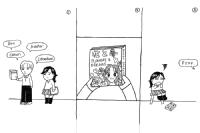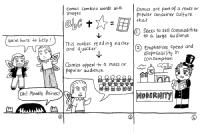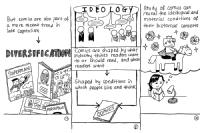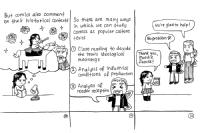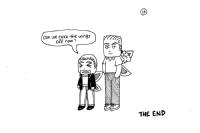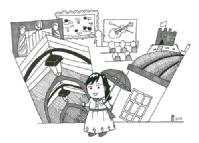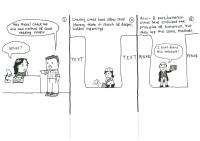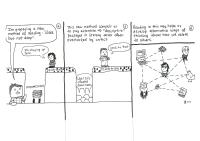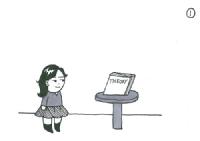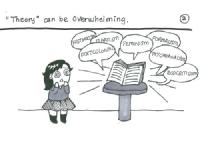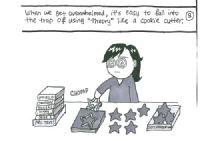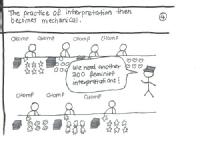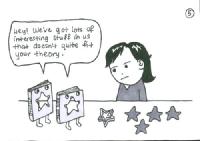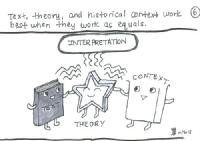Comics
Comics are a great way of working through difficult ideas. I have been using comics as a pedagogical tool in my seminars, as well as in my own research activity more widely. Here are some examples:
A Comic about Comics (for "Modern World Literatures") (2014)
In the week that students were assigned to read Marjane Satrapi's graphic novel, Persepolis, I drew this comic strip to help the students better understand how they might read comics critically. The comic strip was uploaded onto the module's Moodle site.
"Because I didn't have a camera with me, here's an illustration instead." (BAVS conference) (2016)
I drew this illustration and posted in on Twitter in September 2016, as a way of encapsulating the wonderful experiences I had at the 2016 British Association of Victorian Studies annual conference at Cardiff University (30 August - 2 September 2016). The conference theme was "Consuming (the) Victorians."
Heather Love's "Descriptive Turn" (for "The English 19C Novel") (2016)
Early in the course, the students were assigned 7 critical readings on theories of the novel, ranging from Bakhtin's "Discourse in the Novel" to Barthes's "The Reality Effect" to Heather Love's 2010 article, "Close but not Deep: Literary Ethics and the Descriptive Turn." I anticipated that the students would find it very difficult to read and understand all 7 readings, so I divided them into groups and got them to draw short comic strips summarising the main argument of a reading of their choice. This is the comic I drew based on Love's article, which I showed to the students as an example.
How to Use Theory (For "Modes of Reading") (2018)
An easy-to-understand way of reminding students not to simply impose theory onto the text.

